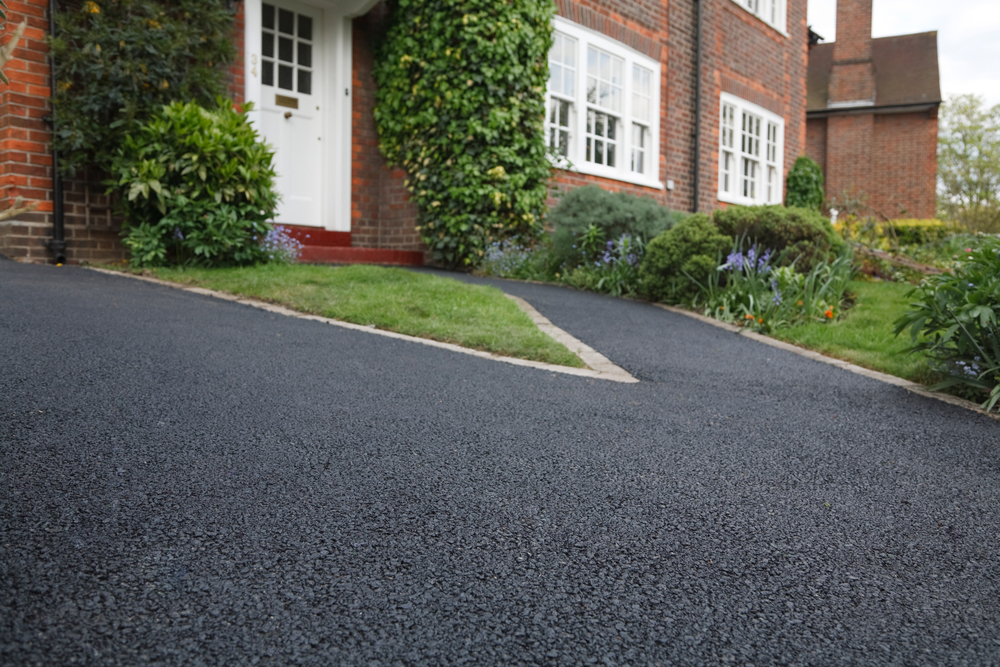Hot Mix Asphalt: A Lasting Solution for Pavement
Warm Mix Asphalt (HMA) has arised as a leading sustainable option for pavement services, offering a myriad of environmental advantages and cutting-edge innovations. As the need for green construction methods expands, exploring the nuances of HMA's sustainability can supply valuable insights right into the future of pavement options.
Environmental Advantages of Warm Mix Asphalt

Additionally, Warm Mix Asphalt assists to reduce city warm island effects. Its dark color absorbs sunshine, reducing the quantity of warm mirrored back into the ambience compared to lighter-colored sidewalks. This can decrease ambient temperature levels in metropolitan areas, decreasing the need for air conditioning and inevitably reducing power consumption.
Additionally, Hot Mix Asphalt adds to improved stormwater management. Its porous nature allows water to charge and infiltrate the pavement groundwater materials, decreasing drainage and the threat of flooding. These ecological benefits make Warm Mix Asphalt a sustainable choice for paving freeways and roadways.
Power Efficiency in HMA Manufacturing
Is power effectiveness an important factor in the manufacturing of Warm Mix Asphalt (HMA)? Energy plays a significant duty in the manufacturing of HMA, influencing both cost and ecological sustainability. One vital aspect of energy efficiency in HMA manufacturing is the usage of warm mix asphalt (WMA) modern technologies.
In addition, improvements in plant modern technologies have led to more energy-efficient HMA production procedures. By enhancing power usage in HMA production, the industry can decrease its carbon footprint while preserving top quality pavement materials.
Recyclability of Hot Mix Asphalt
The recyclability of Warm Mix Asphalt (HMA) is an essential facet of its sustainability and lasting environmental effect. HMA is just one of one of the most recycled materials in the United States, with over 100 million lots of recovered asphalt sidewalk (RAP) being recycled annually in brand-new sidewalk building. Recycling HMA provides several ecological advantages, such as lowering the need for virgin materials, reducing energy consumption during manufacturing, and reducing the amount of waste sent out to garbage dumps.
The procedure of recycling HMA entails grating the existing pavement, crushing it into smaller sized items, and mixing it with brand-new accumulation and asphalt binder to develop a recycled mix. This recycled mix can frequently carry out as well as or perhaps much better than standard HMA, while requiring fewer resources and creating lower Continued greenhouse gas discharges. By including RAP into brand-new pavement jobs, road firms can preserve natural deposits, reduce prices, and reduce the ecological impact of roadway construction and maintenance activities. On the whole, the recyclability of HMA plays a significant function in promoting sustainable methods within the pavement market.

Long-Term Performance of HMA
Asphalt sidewalks show resilience and durability over an extended duration, reflecting the long-term performance of Warm Mix Asphalt (HMA) The long life of HMA can be credited to its capacity to hold up against hefty website traffic loads, extreme weather problems, and the results of aging. Researches have shown that properly designed and properly created HMA pavements can last for twenty years or more with routine upkeep. The secret to taking full advantage of the long-lasting performance of HMA lies in using premium materials, following best practices in building and construction, and carrying out efficient maintenance methods. Appropriate water drainage, regular assessments, webpage and prompt repairs are necessary for preserving the structural integrity of HMA pavements over time. Furthermore, advancements in HMA modern technology, such as the use of polymer-modified binders and warm mix asphalt, have actually even more boosted the longevity and longevity of HMA pavements. By prioritizing high quality construction and upkeep methods, HMA remains to prove itself as a cost-effective and sustainable solution for long-lasting pavement framework.

HMA: Sturdiness and Sustainability
Demonstrating both longevity and sustainability, Hot Mix Asphalt (HMA) has ended up being a keystone in the building and construction of long-lasting sidewalk frameworks - regrading. HMA's durability stems from its ability to endure hefty tons, harsh weather, and high website traffic quantities, making it a trusted option for roads, highways, and airport terminal runways. The structure of HMA, which commonly consists of aggregates, binder, and filler, plays a crucial role in improving its long life and resistance to put on and tear
Moreover, HMA's sustainability hinges on its recyclability and energy-efficient manufacturing process. The capability to reuse reclaimed asphalt pavement (RAP) in brand-new HMA mixtures reduces the demand for virgin materials and decreases the environmental influence of sidewalk building and upkeep. Additionally, the energy efficiency of producing HMA depends on its lower mixing temperatures contrasted to various other sidewalk materials, bring about reduced power intake and greenhouse gas discharges.
Conclusion
In final thought, warm mix asphalt (HMA) provides a sustainable remedy for pavement with its eco-friendly features. HMA's recyclability, energy efficiency in production, and lasting longevity make it a green option for road construction. By saving all-natural sources, minimizing waste, and reducing greenhouse gas exhausts, HMA plays a vital role in promoting sustainability in framework advancement. Its ability to minimize metropolitan warmth island effects even more underscores its significance in creating ecologically mindful and durable sidewalk systems.
HMA is one of the most recycled products in the United States, with over 100 million bunches of redeemed asphalt sidewalk (RAP) being reused annually in brand-new pavement building.The procedure of recycling HMA involves grating the existing pavement, squashing it into smaller pieces, and mixing it with brand-new aggregate and asphalt binder to create a recycled mix.Asphalt pavements show longevity and strength over an extended duration, reflecting the long-term performance of Warm Mix Asphalt (HMA) In addition, innovations in HMA technology, such as the use of polymer-modified binders and cozy mix asphalt, have actually better enhanced the longevity and long life of HMA sidewalks. The capability to recycle reclaimed here asphalt pavement (RAP) in new HMA mixtures decreases the need for virgin materials and reduces the environmental influence of pavement building and upkeep.